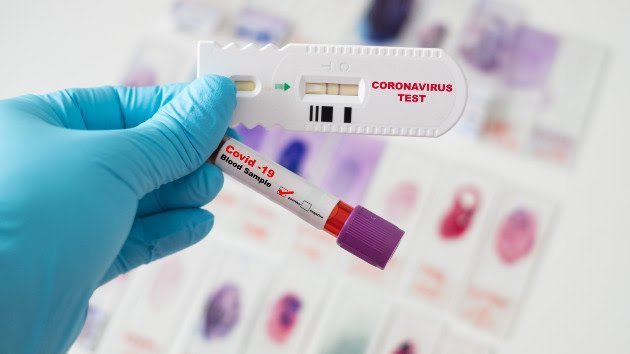(ATLANTA) — The Centers for Disease Control and Prevention announced Friday it is changing the way it does surveillance of COVID-19 in the United States as the emergencies related to the virus come to an end.
In January, the Biden administration told Congress that it would let the COVID-19 national emergency and the public health emergency expire on May 11.
Accordingly, the CDC said it plans to either transition certain categories of COVID-19 national reporting to other sources or discontinue them entirely.
“Although next week marks the end of the public health emergency, it is not the end of COVID-19,” Dr. Nirav Shah, the CDC’s principal deputy director, said during a call with reporters Thursday. “COVID-19 remains a risk and CDC remains committed to preventing severe illness and death associated with COVID-19, particularly for those who are at higher risk.”
He continued, “We will continue to keep our eye on the COVID-19 ball, and we will do so through a multitude of metrics.”
In one of the biggest moves, the federal health agency will stop sharing data about COVID-19 transmission levels and community levels and use COVID-related hospital admissions as the primary metric to measure virus spread.
Shah said this is because community levels rely on aggregate case rates, which are ending when the public health emergency expires, and those case rates may not be reported to CDC by jurisdictions after May 11.”
The CDC has noted that as the pandemic has progressed, case data has become less reliable because of increases in home testing, with results often not reported to public health officials.
“Since February of 2022, there has been a 99% accordance with the CCL, the community levels — which are being retired — and the new hospital admission-driven metrics,” Shah said. “In short, we will still be able to tell that it’s snowing, even though we’re no longer counting every snowflake.”
Hospitalizations will move from being reported daily to weekly, while keeping track of demographic data, such as age and race/ethnicity, as well as data on the treatment being received by patients.
Dr. Brendan Jackson, lead of the CDC’s COVID-19 Response, said there are other metrics the CDC will continue to monitor that can give notice before a potential spike.
“Hospitalizations provide the best national level view of COVID trends,” Jackson said during the media call. “There are also metrics that provide earlier signals of change in COVID activity.”
For example, “CDC reports emergency department visits for COVID-19 on our COVID data tracker website down to the state level. This is a key early indicator of evolving trends,” he added.
Additionally, the CDC is switching its test positivity data to a surveillance system, which is based on voluntary reporting from over 450 laboratories nationwide.
Also seeing changes is V-safe, a smartphone tool that uses text messaging and web surveys to provide check-ins after people receive the COVID-19 vaccine.
Starting May 19, people who participated in v-safe will not be able to add new COVID-19 vaccine doses to their account. People who received doses that were added before May 19 will have health check-ins until June 30.
“At this point in the program, very little new data are being reported to the v-safe system,” the CDC said in a press released. “V-safe was developed specifically for COVID-19 vaccines and has been an essential component of the pandemic vaccine safety monitoring systems that have successfully and comprehensively characterized the safety of the COVID-19 vaccines used in the United States.”
The CDC said it is developing a new version of v-safe, expected to launch later in 2023, which will allow users to share post-vaccination experiences with new vaccines.
However, there are certain activities that will be unaffected by the CDC’s change in reporting and the end of the emergencies.
These include case data broken down by demographics as well as CDC’s work on long COVID, vaccine effectiveness and wastewater surveillance.
Shah said there is still a need within the agency to modernize the way they collect and monitor disease, so it does not take as long to do so as it did with COVID-19.
“In the next pandemic, we shouldn’t wait six months to have complete hospitalization data,” Shah said. “We shouldn’t need dozens of data use agreements to understand the demographics of who’s getting vaccinated.”
He continued, “We should have access to robust data before a pandemic. We should be ready, so we don’t have to get ready. That is the work ahead of us and the work we are committed to doing.”
Copyright © 2023, ABC Audio. All rights reserved.











